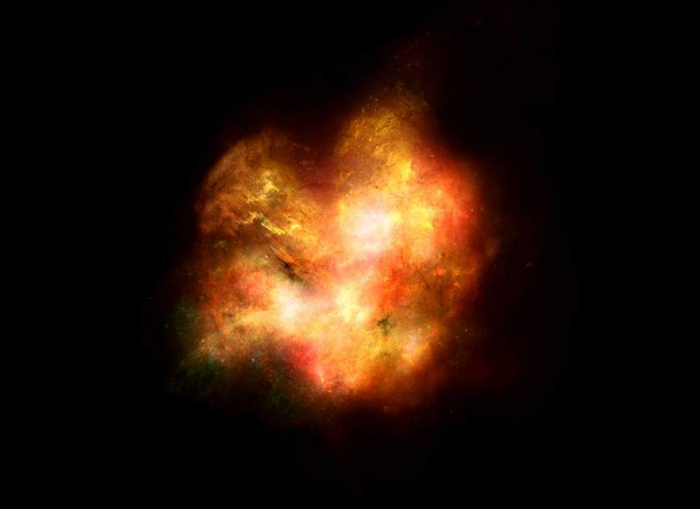The universe was far brighter at its beginning than we ever thought, scientists have revealed – in a breakthrough that could explain how the dazzling spectacle of the night sky came about.
New data from Nasa's Spitzer Space Telescope found that some of the earliest galaxies to come into existence were brighter than had been expected. The extra light came about because the galaxies were releasing blazing amounts of ionising radiation.
That discovery could help shed light on what is called the "Epoch of Reionization", the mysterious moment at which the universe's first lights started switching on, and which led to the starry sky we see at night.
The new study looked at some of the universe's first ever galaxies, which formed less than a billion years after the big bang or more than 13 bilion years ago.
It found that in some wavelengths of infrared light, the light coming from the stars were much brighter than had been expected. The study was the first time that scientists had seen the phenomenon in a big sample of different galaxies – showing that the brightness was coming not from a few galaxies but that the average galaxies were much brighter than those we see today.
The birth of the first stars in the universe still remains largely mysterious, and scientists don't know exactly or definitively when it happened. But the existing evidence suggests the first lights started to switch on about 100 or 200 million years after the big bang, when the hydrogen gas that was floating around the universe gradually started to push itself into stars.
After about a billion years, the universe was dazzling with the bright lights we see today. And the universe had changed fundamentally: the neutral hydrogen gas that had been floating around had disappeared, with the universe switching from being full of neutrogen hydrogen to being filled with ionised hydrogen.
That process is known as the Epoch of Reionization and is key to the nature of the universe as we see it now. And while scientists understand what happened and how it changed the universe, they do not know how the universe was filled with enough radiation to switch over an entire universe, and what prompted it.
"It's one of the biggest open questions in observational cosmology," Stephane De Barros, lead author of the study and a postdoctoral researcher at the University of Geneva in Switzerland said in a statement. "We know it happened, but what caused it? These new findings could be a big clue."
To try and answer that question, researchers looked back in time, peering through the universe to see the moment just before the Epoch of Reionization came to an end. The Spitzer telescope looked at two specific parts of the sky for 200 hours, letting it see light that began its journey more than 13 billion years ago, coming from the very beginnings of the universe.
In that data, the astronomers were able to find 135 distant galaxies, and spotted particular brightness in two specific wavelengths where light is produced during the process of ionizing radiation colliding with hydrogen and oxygen. It suggests those early galaxies had huge young stars made up of hydrogen and helium.
Those are not the universe's first stars, but they among the oldest. As such, they offer a hint at how the universe evolved during the time they were born.
"We did not expect that Spitzer, with a mirror no larger than a Hula-Hoop, would be capable of seeing galaxies so close to the dawn of time," said Michael Werner, Spitzer's project scientist at NASA's Jet Propulsion Laboratory in Pasadena, California. "But nature is full of surprises, and the unexpected brightness of these early galaxies, together with Spitzer's superb performance, puts them within range of our small but powerful observatory."
The Independent
More about:
















































